How To Fix 'WiFi Doesn't Have A Valid IP Configuration' Problem On Windows 10?
How To Fix 'WiFi Doesn't Have A Valid IP Configuration' Problem On Windows 10?
In 1995, about only 1% of the world's population was online. Twenty years later, and more than three billion people, nearly half of the planet, have an Internet connection. Being unable to connect to the Internet these days can be frustrating and make you feel like you are back in 1995. If you are using the Windows 10 operating system and receiving an "WiFi doesn't have a valid IP configuration" error, then you know how it feels. This prevents use of WiFi and is a common problem experienced by Windows users. The problem concerning not having a valid IP configuration can occur even if you are using an Ethernet connection on your computer. The good news is that you can easily fix this problem.
The "WiFi doesn't have a valid IP configuration" error message indicates that there is a problem with your computer TCP/IP stack - a set of network protocol layers that can work negatively together to result in an interruption to your Internet service. You might have received this error message when troubleshooting. Unfortunately, Windows Troubleshooting usually only finds problems, but does not provide solutions - you must solve the problem manually. The configuration problem can be caused by several issues such as a faulty network, incorrect network settings, hardware issues, network problems from your network operator, disabled Windows network services, and other reasons.
There are ways to fix this problem manually: you might need to release and renew your IP address, uninstall your wireless network adapter driver, reset TCP/IP, manually set your IP address, update your network adapter driver, or use other methods. In this article, we demonstrate some solutions step-by-step - you can try each until you find one that works for you. We will start with releasing and renewing your IP address, since this solution commonly works for users who have a network problem.
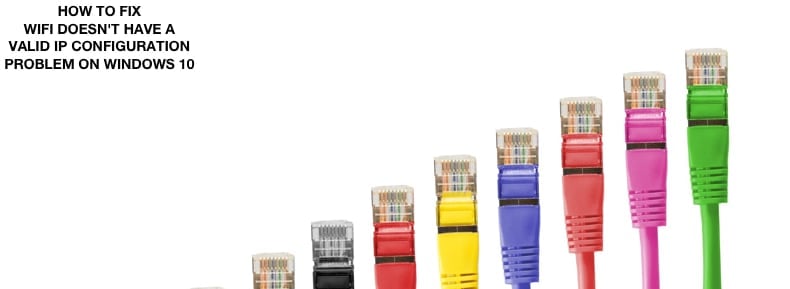
Table of Contents:
Introduction
Release And Renew Your IP Address
Reset TCP/IP
Uninstall Wireless Adapter Driver
Set Your IP Address Manually
Perform Clean Boot
Uninstall Your Antivirus Software
Increase The Number Of DHCP Users
Update Network Adapter Driver
Video Showing How To Fix The 'WiFi Doesn't Have A Valid IP Configuration' Problem On Windows 10
Download Computer Malware Repair Tool
It is recommended to run a free scan with Malwarebytes - a tool to detect malware and fix computer errors. You will need to purchase the full version to remove infections and eliminate computer errors. Free trial available.
Release And Renew Your IP Address
This might be the easiest way to fix the "WiFi doesn't have a valid IP configuration" problem by executing commands in Command Prompt. First, open Command Prompt by typing "command prompt" in Search and right-clicking on the "Command Prompt". Then, select "Run as administrator" to run it with administrator privileges.

In the Command Prompt window, type "ipconfig /release" and press Enter on your keyboard. Make sure that you put a space between "ipconfig" and "/release" in the command.

Now, do the same with the "ipconfig /renew" command. You must put a space after "ipcongif" in this command as well. Press Enter.

When you have finished entering the commands, type "exit", and press Enter to exit Command Prompt. Try restarting your computer to see if this helped to solve your problem.
[Back to Table of Contents]
Reset TCP/IP
This one is also simple: execute commands in Command Prompt. Open Command Prompt from Search again by right-clicking on it and run as administrator. In the Command Prompt window, type the "netsh winsock reset" command and press Enter on your keyboard.

Then, type the "netsh int ip reset" command and press Enter on your keyboard. Exit Command Prompt and restart your computer to see if it helped to solve the problem.

[Back to Table of Contents]
Uninstall Wireless Adapter Driver
You may receive the "WiFi doesn't have a valid IP configuration" error due to a faulty network driver. You can try to uninstall the wireless adapter driver and then let the Windows 10 operating system reinstall it automatically the next time you start Windows. To uninstall your network adapter driver, go to Device Manager. Type "device manager" in Search and click the "Device Manager" result.

In the Device Manager window, find "Network adapters", expand it and right-click on your wireless device, Then, choose "Uninstall" from the drop-down menu.

You will be asked to confirm the uninstallation. Click "OK". Mark the "Delete the driver software for this device" checkbox if you see this option.

You will need to restart your PC for the changes to take effect. Restart your computer and see if it helped to solve this problem.
[Back to Table of Contents]
Set Your IP Address Manually
When you connect to Wi-Fi, you are usually given an IP address, and this process is performed by DHCP. The valid IP configuration issue means that something is wrong, and DHCP fails to receive a valid IP address. You can add a valid IP address manually to fix this problem - right-click on Start and select "Network Connections".
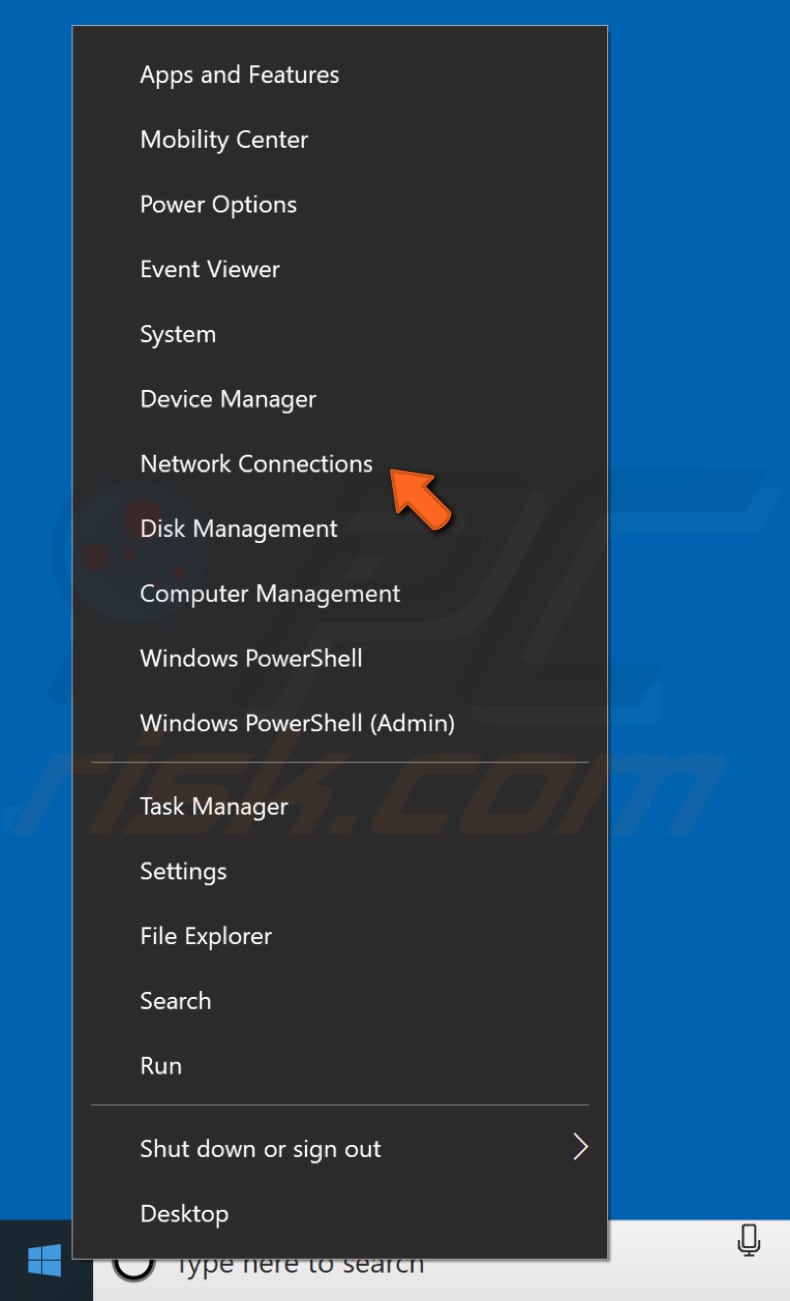
In the Network status window, click "Change adapter options" to view network adapters and change connection settings.

You will see your network connection type. You should also see your wireless connection here (in our case, we see the Ethernet connection because we are using a wired connection). Right-click on your wireless connection and click "Properties" in the drop-down menu.
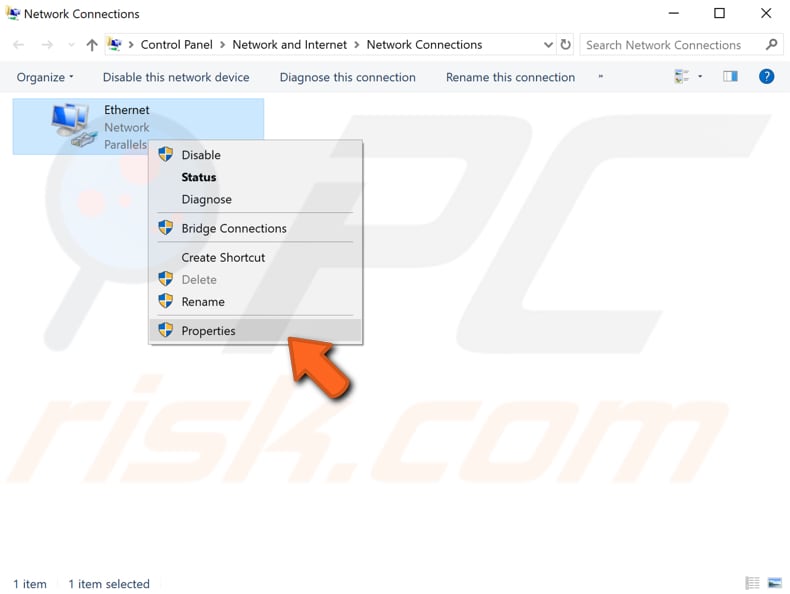
Click "Internet Protocol Version 4 (TCP/IPv4)" to highlight it, and then click "Properties".
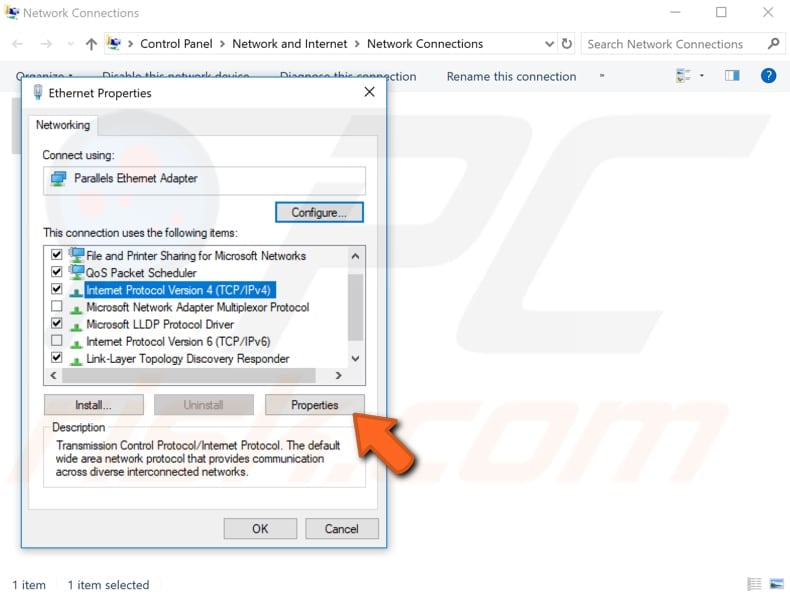
You will see your Internet Protocol Version 4 (TCP/IPv4) Properties window. Here, mark "Use the following IP address:" and "Use the following DNS server addresses:", and then type the IP address, subnet mask and default gateway, preferred DNS server and Alternate DNS server. You can use our screenshot as an example.
Note: If your router LAN IP address is 192.168.1.1, you can set the IP address to 192.168.1.x (x is a number from 2 to 253), subnet mask to 255.255.255.0 and default gateway to 192.168.1.1.).

Click "OK" and restart your computer to see if this solution helped to fix the problem.
[Back to Table of Contents]
Perform Clean Boot
You can also try to fix this problem by performing a clean boot of your Windows 10 operating system. A clean boot is performed to start Windows by using a minimal set of drivers and startup programs. This helps to eliminate software conflicts that occur when you install a program or an update, or when you run a program in Windows. This means you will have to disable all third-party applications and services to see if any of these applications is interrupting your wireless connection and preventing you from connecting to it. To perform a clean boot, type "system configuration" in Search and open the desktop app. Another way to access System Configuration is to type "run" in Search, open it, type "mschonfig", and the click OK to run it.
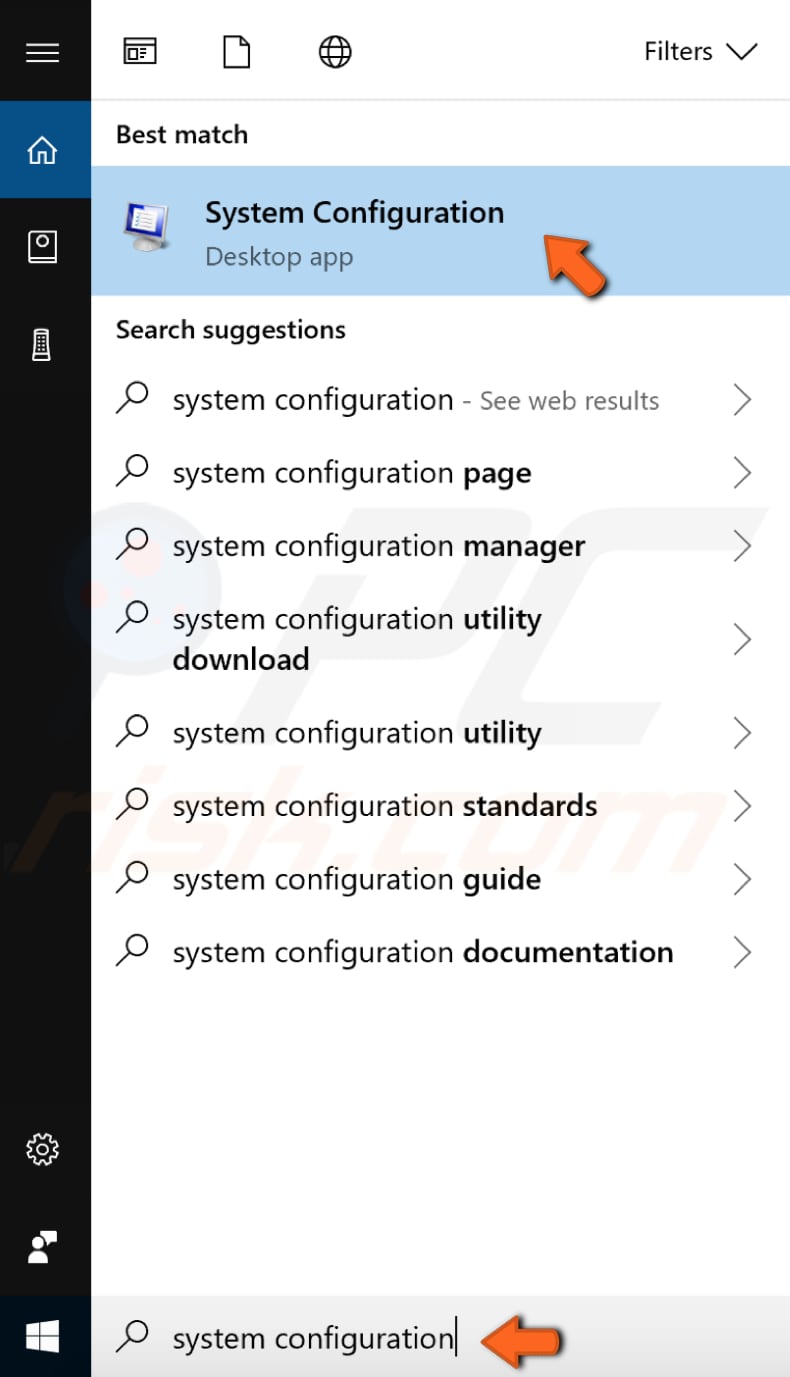
When System Configuration is opened, select "Selective startup" so you can make changes and unmark "Load startup items".
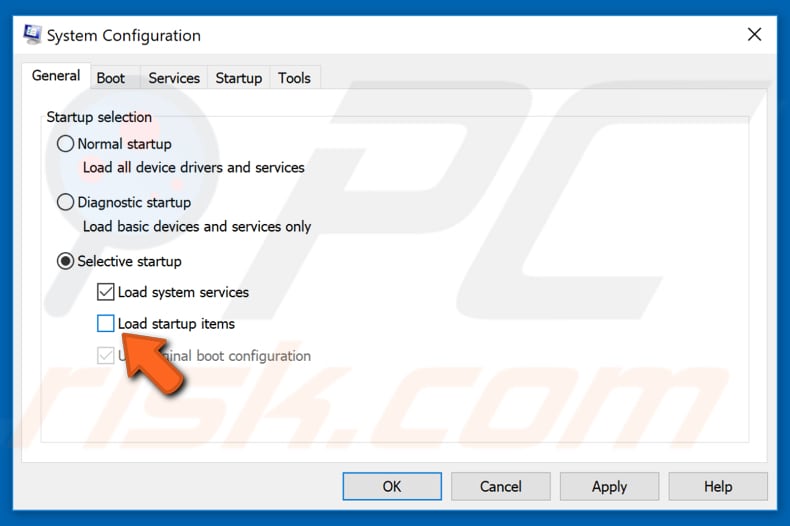
Then, go to the "Services" tab and mark the "Hide all Microsoft services" checkbox. This will hide Microsoft apps and services (because we need to disable only third-party applications). In our case, only two services remain. Click "Disable all".
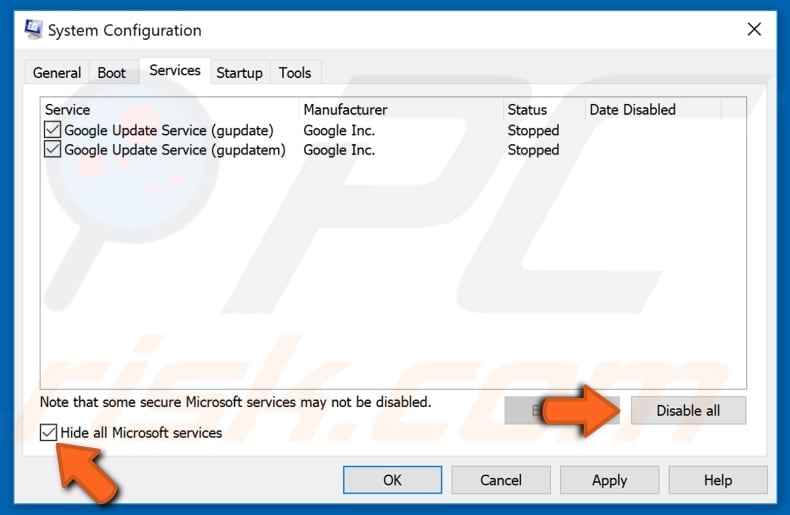
Then, go to the "Startup" tab and click "Open Task Manager" - this will allow you to manage startup items using Task Manager.
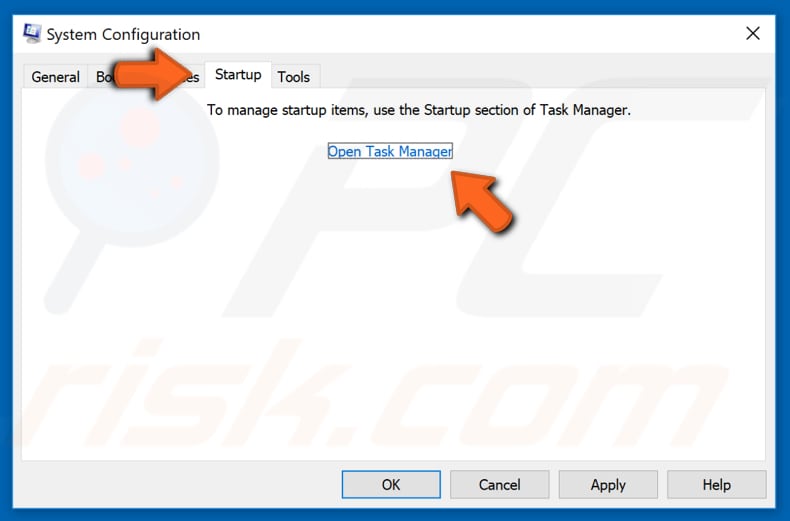
In opened Task Manager window, you will see a list of startup applications. Right-click each enabled application and disable it. You can also use the "Disable" button on the bottom-right corner.
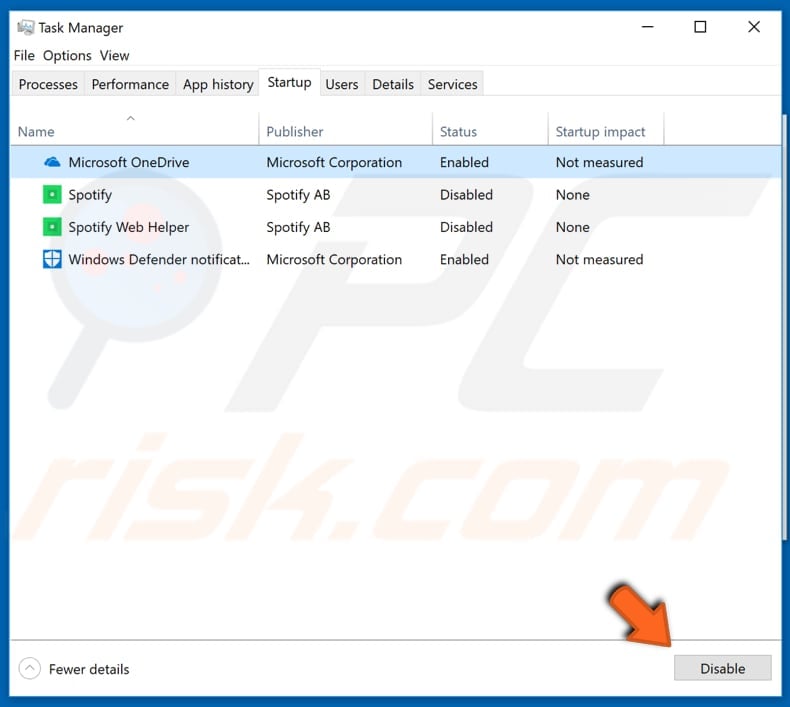
When all startup applications are disabled, close Task Manager and click "Apply" and "OK" in the System Configuration window. Then, restart your computer for the changes to take effect. Check if this helped to solve the problem. If the problem is fixed, then it means that one of the programs is causing this error. You can try to enable them individually to see which is causing the problem, and then uninstall it.
[Back to Table of Contents]
Uninstall Your Antivirus Software
There are reports from users that antivirus software is associated with the "WiFi doesn't have a valid IP configuration" error. If this is the case, then you will need to uninstall it from your Windows operating system. If your Internet connection works after the uninstall, you can reinstall your antivirus software (we recommend the latest version), or switch to different antivirus software. Uninstall your antivirus software and see if this helps.
[Back to Table of Contents]
Increase The Number Of DHCP Users
Some users report that you can fix this problem by increasing the number of DHCP users. Routers are usually limited to 50 DHCP users - this could be the reason why you are getting the "WiFi doesn't have a valid IP configuration" error. To fix this problem, access your router and change the DHCP number of users manually. Some users also suggest that you increase the number of maximum wireless users (some routers are limited to only 10 wireless users). Check your router manual to see how to increase the number of DHCP users on your router. This might help to resolve the problem with your IP configuration.
[Back to Table of Contents]
Update Network Adapter Driver
This problem might be caused by an old or incorrect driver. In this case, you need to get an updated/new driver for your network adapter. There is an easy way to do this automatically with Snappy Driver Installer. You will need a computer with a working internet connection in order to download it.
Snappy Driver Installer (SDI) is a powerful free driver updater tool for Windows that can store its entire collection of drivers offline. Having offline drivers gives Snappy Driver Installer the ability to have access to fast driver updates, even if there is no active internet connection. Snappy Driver works with both 32-bit and 64-bit versions of Windows 10, Windows 8, Windows 7, Windows Vista, and Windows XP. Drivers are downloaded through Snappy Driver Installer in what are called driverpacks, which are just collections (packs) of drivers for various hardware like sound devices, video cards, network adapters etc. It can also show duplicate drivers and invalid drivers and it separates the updates that require you to restart your computer so it would be easier to distinguish them from the rest. You can download Snappy Driver Installer from here.
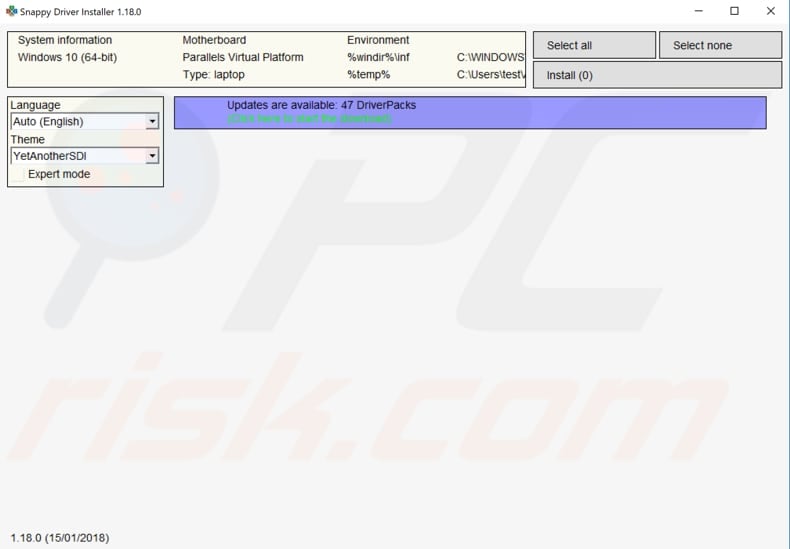
After you have finished updating and installing drivers, restart Windows 10 for them to take effect and try to connect to the Internet to see if this works.
You can also update your driver manually, but you will need a computer with a working Internet connection. Go to your network adapter manufacturer website and download the latest driver and copy it to your USB drive. Go to Device Manager (type "device manager" in Search and open it). Expand the "Network adapters" section, select your network adapter, and right-click on it. Then, choose "Update Driver".

You will be asked how you wish to search for drivers and provided two options: 1) search automatically for updated driver software; 2) browse your computer for driver software. The first option requires an Internet connection (if you have problems with your internet connection, choose the second option). Locate the driver on your USB drive and follow the instructions.

When you have finished installing the new/updated driver, restart your computer for the changes to take effect and see if the network connectivity problem is fixed.
One of these solutions should solve your connectivity issue if you get the "WiFi doesn't have a valid IP configuration" error - so you can get back online!
The "WiFi doesn't have a valid IP configuration" error message indicates that there is a problem with your computer TCP/IP stack - a set of network protocol layers that can work negatively together to result in an interruption to your Internet service. You might have received this error message when troubleshooting. Unfortunately, Windows Troubleshooting usually only finds problems, but does not provide solutions - you must solve the problem manually. The configuration problem can be caused by several issues such as a faulty network, incorrect network settings, hardware issues, network problems from your network operator, disabled Windows network services, and other reasons.
There are ways to fix this problem manually: you might need to release and renew your IP address, uninstall your wireless network adapter driver, reset TCP/IP, manually set your IP address, update your network adapter driver, or use other methods. In this article, we demonstrate some solutions step-by-step - you can try each until you find one that works for you. We will start with releasing and renewing your IP address, since this solution commonly works for users who have a network problem.

Table of Contents:
Introduction
Release And Renew Your IP Address
Reset TCP/IP
Uninstall Wireless Adapter Driver
Set Your IP Address Manually
Perform Clean Boot
Uninstall Your Antivirus Software
Increase The Number Of DHCP Users
Update Network Adapter Driver
Video Showing How To Fix The 'WiFi Doesn't Have A Valid IP Configuration' Problem On Windows 10
Download Computer Malware Repair Tool
It is recommended to run a free scan with Malwarebytes - a tool to detect malware and fix computer errors. You will need to purchase the full version to remove infections and eliminate computer errors. Free trial available.
Release And Renew Your IP Address
This might be the easiest way to fix the "WiFi doesn't have a valid IP configuration" problem by executing commands in Command Prompt. First, open Command Prompt by typing "command prompt" in Search and right-clicking on the "Command Prompt". Then, select "Run as administrator" to run it with administrator privileges.

In the Command Prompt window, type "ipconfig /release" and press Enter on your keyboard. Make sure that you put a space between "ipconfig" and "/release" in the command.

Now, do the same with the "ipconfig /renew" command. You must put a space after "ipcongif" in this command as well. Press Enter.

When you have finished entering the commands, type "exit", and press Enter to exit Command Prompt. Try restarting your computer to see if this helped to solve your problem.
[Back to Table of Contents]
Reset TCP/IP
This one is also simple: execute commands in Command Prompt. Open Command Prompt from Search again by right-clicking on it and run as administrator. In the Command Prompt window, type the "netsh winsock reset" command and press Enter on your keyboard.

Then, type the "netsh int ip reset" command and press Enter on your keyboard. Exit Command Prompt and restart your computer to see if it helped to solve the problem.

[Back to Table of Contents]
Uninstall Wireless Adapter Driver
You may receive the "WiFi doesn't have a valid IP configuration" error due to a faulty network driver. You can try to uninstall the wireless adapter driver and then let the Windows 10 operating system reinstall it automatically the next time you start Windows. To uninstall your network adapter driver, go to Device Manager. Type "device manager" in Search and click the "Device Manager" result.

In the Device Manager window, find "Network adapters", expand it and right-click on your wireless device, Then, choose "Uninstall" from the drop-down menu.

You will be asked to confirm the uninstallation. Click "OK". Mark the "Delete the driver software for this device" checkbox if you see this option.

You will need to restart your PC for the changes to take effect. Restart your computer and see if it helped to solve this problem.
[Back to Table of Contents]
Set Your IP Address Manually
When you connect to Wi-Fi, you are usually given an IP address, and this process is performed by DHCP. The valid IP configuration issue means that something is wrong, and DHCP fails to receive a valid IP address. You can add a valid IP address manually to fix this problem - right-click on Start and select "Network Connections".

In the Network status window, click "Change adapter options" to view network adapters and change connection settings.

You will see your network connection type. You should also see your wireless connection here (in our case, we see the Ethernet connection because we are using a wired connection). Right-click on your wireless connection and click "Properties" in the drop-down menu.

Click "Internet Protocol Version 4 (TCP/IPv4)" to highlight it, and then click "Properties".

You will see your Internet Protocol Version 4 (TCP/IPv4) Properties window. Here, mark "Use the following IP address:" and "Use the following DNS server addresses:", and then type the IP address, subnet mask and default gateway, preferred DNS server and Alternate DNS server. You can use our screenshot as an example.
Note: If your router LAN IP address is 192.168.1.1, you can set the IP address to 192.168.1.x (x is a number from 2 to 253), subnet mask to 255.255.255.0 and default gateway to 192.168.1.1.).

Click "OK" and restart your computer to see if this solution helped to fix the problem.
[Back to Table of Contents]
Perform Clean Boot
You can also try to fix this problem by performing a clean boot of your Windows 10 operating system. A clean boot is performed to start Windows by using a minimal set of drivers and startup programs. This helps to eliminate software conflicts that occur when you install a program or an update, or when you run a program in Windows. This means you will have to disable all third-party applications and services to see if any of these applications is interrupting your wireless connection and preventing you from connecting to it. To perform a clean boot, type "system configuration" in Search and open the desktop app. Another way to access System Configuration is to type "run" in Search, open it, type "mschonfig", and the click OK to run it.

When System Configuration is opened, select "Selective startup" so you can make changes and unmark "Load startup items".

Then, go to the "Services" tab and mark the "Hide all Microsoft services" checkbox. This will hide Microsoft apps and services (because we need to disable only third-party applications). In our case, only two services remain. Click "Disable all".

Then, go to the "Startup" tab and click "Open Task Manager" - this will allow you to manage startup items using Task Manager.

In opened Task Manager window, you will see a list of startup applications. Right-click each enabled application and disable it. You can also use the "Disable" button on the bottom-right corner.

When all startup applications are disabled, close Task Manager and click "Apply" and "OK" in the System Configuration window. Then, restart your computer for the changes to take effect. Check if this helped to solve the problem. If the problem is fixed, then it means that one of the programs is causing this error. You can try to enable them individually to see which is causing the problem, and then uninstall it.
[Back to Table of Contents]
Uninstall Your Antivirus Software
There are reports from users that antivirus software is associated with the "WiFi doesn't have a valid IP configuration" error. If this is the case, then you will need to uninstall it from your Windows operating system. If your Internet connection works after the uninstall, you can reinstall your antivirus software (we recommend the latest version), or switch to different antivirus software. Uninstall your antivirus software and see if this helps.
[Back to Table of Contents]
Increase The Number Of DHCP Users
Some users report that you can fix this problem by increasing the number of DHCP users. Routers are usually limited to 50 DHCP users - this could be the reason why you are getting the "WiFi doesn't have a valid IP configuration" error. To fix this problem, access your router and change the DHCP number of users manually. Some users also suggest that you increase the number of maximum wireless users (some routers are limited to only 10 wireless users). Check your router manual to see how to increase the number of DHCP users on your router. This might help to resolve the problem with your IP configuration.
[Back to Table of Contents]
Update Network Adapter Driver
This problem might be caused by an old or incorrect driver. In this case, you need to get an updated/new driver for your network adapter. There is an easy way to do this automatically with Snappy Driver Installer. You will need a computer with a working internet connection in order to download it.
Snappy Driver Installer (SDI) is a powerful free driver updater tool for Windows that can store its entire collection of drivers offline. Having offline drivers gives Snappy Driver Installer the ability to have access to fast driver updates, even if there is no active internet connection. Snappy Driver works with both 32-bit and 64-bit versions of Windows 10, Windows 8, Windows 7, Windows Vista, and Windows XP. Drivers are downloaded through Snappy Driver Installer in what are called driverpacks, which are just collections (packs) of drivers for various hardware like sound devices, video cards, network adapters etc. It can also show duplicate drivers and invalid drivers and it separates the updates that require you to restart your computer so it would be easier to distinguish them from the rest. You can download Snappy Driver Installer from here.

After you have finished updating and installing drivers, restart Windows 10 for them to take effect and try to connect to the Internet to see if this works.
You can also update your driver manually, but you will need a computer with a working Internet connection. Go to your network adapter manufacturer website and download the latest driver and copy it to your USB drive. Go to Device Manager (type "device manager" in Search and open it). Expand the "Network adapters" section, select your network adapter, and right-click on it. Then, choose "Update Driver".

You will be asked how you wish to search for drivers and provided two options: 1) search automatically for updated driver software; 2) browse your computer for driver software. The first option requires an Internet connection (if you have problems with your internet connection, choose the second option). Locate the driver on your USB drive and follow the instructions.

When you have finished installing the new/updated driver, restart your computer for the changes to take effect and see if the network connectivity problem is fixed.
One of these solutions should solve your connectivity issue if you get the "WiFi doesn't have a valid IP configuration" error - so you can get back online!














Comments
Post a Comment